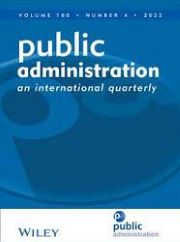Abstract
This study carries two distinct contributions to extant literature. Theoretically, it introduces an organizational approach to the study of public governance. Empirically, it demonstrates how the organizational architecture of government represents a stable and systemic capacity for public governance across time. The study establishes how stability serves as an enduring feature of public governance and how this is anchored in the organizational architecture of government systems. Moreover, structured flexibility is illustrated by how the civil service adapts to both international organizations and societal stakeholders. Theorizing the organizational dimension of public governance, this study also introduces a design tool that may be useful for deliberately (re)structuring public governance. Empirically, these arguments are probed by a sizable dataset with 13,173 observations across 40 years, consisting of nine surveys of civil servants at ministry and agency levels. The data enables a long-term perspective on government civil servants over nearly half a century, thus allowing for a comprehensive study of the organizational basis for public governance.
Full info
Jarle Trondal.
“Let's organize”: The organizational basis for stable public governance
Public Administration, 2023, 101(1).
DOI: 10.1111/padm.12858
